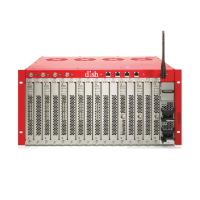7
Mechanical Loading: SMARTBOX is designed to
be rack-mounted in a standard EIA 19-inch-width
telecommunications rack. Mounting of the equipment
in the rack should be such that a hazardous condition
is not achieved due to uneven mechanical loading.
Circuit Overloading: Consideration should be given to
the connection of the equipment to the supply circuit
and the eect that overloading of the circuits might
have on over-current protection and supply wiring.
Appropriate consideration of equipment nameplate
ratings should be used when addressing this concern.
Outdoor Antenna Grounding: Before attempting
to install this product, be sure the antenna or cable
system is grounded so as to provide some protection
against voltage surges and built-up static charges.
a) Use No.10 AWG (5.3mm) copper, No.8 AWG (8.4mm)
aluminum, No.7 AWG (10mm) copper-clad steel or
bronze wire or larger, as ground wire.
b) Secure antenna lead-in and ground wires to house
with stand-o insulators spaced from 4 feet (1.22m)
to 6 feet (1.83m) apart.
c) Mount antenna discharge unit as close as possible to
where lead-in enters the building.
d) A driven rod may be used as the grounding
electrode where other types of electrode systems
do not exist. Refer to the National Electrical Code,
ANSI/NFPA 70-1984 for information.
e) Use jumper wire not smaller than No.6 AWG
(13.3mm) copper or equivalent, when a separate
antenna grounding electrode is used.
Grounding Example from
National Electrical Code
EXAMPLE OF ANTENNA GROUNDING ACCORDING TO
NATIONAL ELECTRICAL CODE INSTRUCTIONS CONTAINED
IN ARTICLE 810 - “RADIO AND TELEVSION EQUIPMENT”

